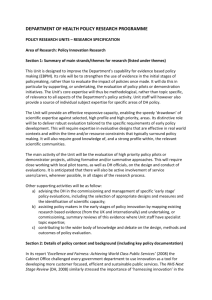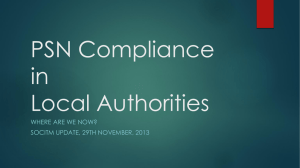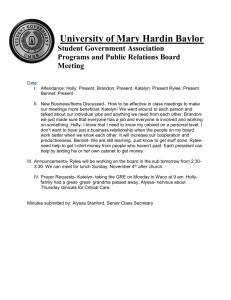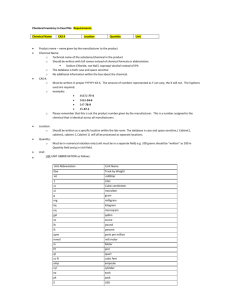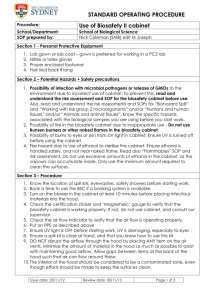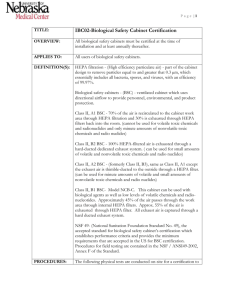10_SWP BSCII_EF-B
advertisement
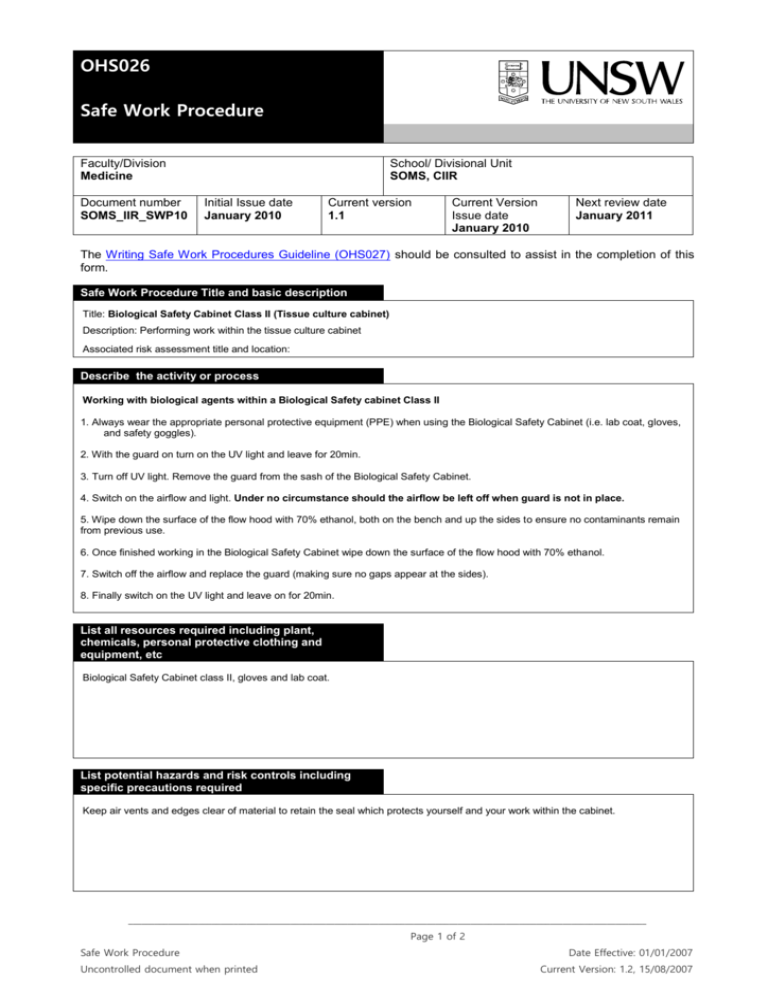
OHS026 Safe Work Procedure Faculty/Division Medicine Document number SOMS_IIR_SWP10 School/ Divisional Unit SOMS, CIIR Initial Issue date January 2010 Current version 1.1 Current Version Issue date January 2010 Next review date January 2011 The Writing Safe Work Procedures Guideline (OHS027) should be consulted to assist in the completion of this form. Safe Work Procedure Title and basic description Title: Biological Safety Cabinet Class II (Tissue culture cabinet) Description: Performing work within the tissue culture cabinet Associated risk assessment title and location: Describe the activity or process Working with biological agents within a Biological Safety cabinet Class II 1. Always wear the appropriate personal protective equipment (PPE) when using the Biological Safety Cabinet (i.e. lab coat, gloves, and safety goggles). 2. With the guard on turn on the UV light and leave for 20min. 3. Turn off UV light. Remove the guard from the sash of the Biological Safety Cabinet. 4. Switch on the airflow and light. Under no circumstance should the airflow be left off when guard is not in place. 5. Wipe down the surface of the flow hood with 70% ethanol, both on the bench and up the sides to ensure no contaminants remain from previous use. 6. Once finished working in the Biological Safety Cabinet wipe down the surface of the flow hood with 70% ethanol. 7. Switch off the airflow and replace the guard (making sure no gaps appear at the sides). 8. Finally switch on the UV light and leave on for 20min. List all resources required including plant, chemicals, personal protective clothing and equipment, etc Biological Safety Cabinet class II, gloves and lab coat. List potential hazards and risk controls including specific precautions required Keep air vents and edges clear of material to retain the seal which protects yourself and your work within the cabinet. ______________________________________________________________________________________________________________________ Page 1 of 2 Safe Work Procedure Uncontrolled document when printed Date Effective: 01/01/2007 Current Version: 1.2, 15/08/2007 List emergency shutdown instructions Turn off power and evacuate as instructed. If using gas or electrical be sure to close tap and turn off the switch inside the cabinet. List clean up and waste disposal requirements Discarding wet waste Standard practice to use bleach (diluted 1:10). For example use 10ml bleach in 100ml of biological wet waste, or use a suitable disinfectant ( example; Diversol 5000 (25g/litre) for biological wet waste. Discarding dry biological waste - plastics 1. Are to be discarded in the BROWN labeled biological waste bags (except long pipettes) with as little residual waste as possible. Please note the department is charged per weight of biological waste. Please place only biological waste in the biological waste bags and all standard waste (i.e. generally any non biological item that has not come into direct contact with biological material, for example serological pipette wrappers) is to be discarded in the general rubbish . Once full staple the top of the bag closed. Write the lab type, room number and date and take to the waste room. 2. Long pipettes are to be discarded in the YELLOW labeled biological waste bags. Once full place in BROWN biological waste bag. Discarding contaminated cells/tissue If your cells/ tissues samples are contaminated: - Take the infected plate/flask and disinfect with bleach/sodium hypochlorite. - Allow disinfected to sit for at least 3hrs prior to discarding. - Notify all contamination outbreaks to the authorizing person. Discarding Glass Place empty glass bottles and clean glass waste in the glass bin. List legislation, standards and codes of practice used in the development of the SWP AS 2243.3—2000 Australian/New Zealand Standard Safety in laboratories Part 3: Microbiological aspects and containment facilities NSW OHS Act and Regulation Supervisory approval, training, and review Supervisor: Signature: Plant custodian: Eva Fiala-Beer Signature List competency required – qualifications, certificates, licencing, training - eg course or instruction: UNSW Laboratory Safety Awareness training UNSW Occupational Health & Safety Awareness training UNSW Hazardous Substances training UNSW PC2 training Registration and Training in the current practices used in the CIIR tissue culture laboratory by Sharron Chow (x51599) SWP review date: January 2011 Responsibility for SWP review: Eva Fiala-Beer ______________________________________________________________________________________________________________________ Page 2 of 2 Safe Work Procedure Uncontrolled document when printed Date Effective: 01/01/2007 Current Version: 1.2, 15/08/2007


